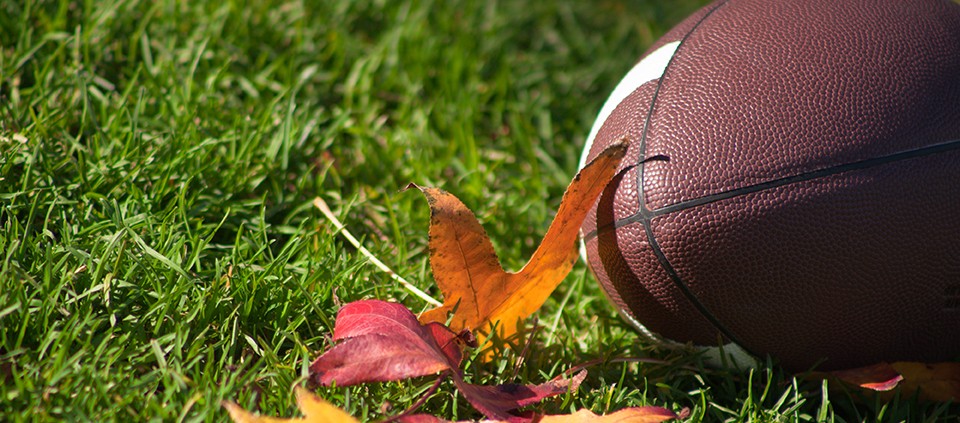Ayurveda on the Gridiron: Finding Balance in the Season of Football

For humans, autumn is a time of harvest, or gathering. For nature, it is a time of spreading and scattering. A paradox, perhaps, but opposites tend to balance. Albert Camus wrote, “Autumn is a second spring when every leaf is a flower.” It is a multisensory season. The azure sky contrasts with the bold colors of fall foliage. Fireplaces churn out the scent of burning wood as the sounds of Canada geese begin their migration south. The wind that only a few weeks ago was hot and sultry now has become cooler and drier. We begin to desire comfort and satiety.
And then, of course, there is football.
American football dates back to November 6, 1869, when the first game was played, between Princeton (then the College of New Jersey) and Rutgers. Since then, it has grown to become the most popular professional and collegiate sport in the United States with its championship game, the Super Bowl, the most-watched program on television. Annual revenue for football exceeds $10 billion. What is the attraction? Could it be Ayurvedic?
In a 2013 USA Today article, Steven Deace wrote, “(Americans are) passionate about football because it embodies everything we love about America. Merit is rewarded, not punished … People of various beliefs and backgrounds—a melting pot, if you will—must unify for a common goal for the team to be successful.” That’s true for Ayurveda, as well, isn’t it? We create a culture of inclusivity to promote health.
How can we apply Ayurvedic tenets during the football season, as we transition to the fall climate? The key lies in the concept of balance. Enjoy the game with friends, but consider going for a walk during half time. Replace the nachos with season-balancing foods like Kripalu Executive Chef Jeremy Smith’s Ginger Cinnamon Baked Apples. Replace the beer with spiced herbal tea (this might not go over well with everyone, but why not give it a try?). Do a little asana or pranayama during penalties. Meditate instead of watching the postgame show.
We can get more ideas on creating balance from nature’s intelligence, which provides us with exactly the foods we need at each time of the year. The fall growing season favors heavy, dense vegetables, such as beets, sweet potatoes, pumpkin, and squashes, and fruit including apples, grapes, and avocado. How about guacamole during the game? In the Samhita, Caraka advises that, in the fall, “winds progressively bring dryness. . .which enhances the bitter, astringent and pungent tastes … As a result, human beings become weak” (Ca. Su. VI/6). To follow Caraka’s advice, favor sweet, sour, and salty tastes, and avoid pungent, bitter, and astringent foods. (Don’t make the guacamole too spicy.)
This time of year, we tend to favor slowing down, spending time indoors, and coming together in community. Who could turn down an invitation to sit around a roaring fire with a cup of hot chocolate, freshly baked cookies, and a board game? Consider taking a holiday from electronics, as overusing our devices can add to the instability of the season and the agitation of the mind. Limit yourself to one football game rather than a marathon.
The shorter days also reset our biological rhythms, and often we become introspective. Looking within engenders emotion that needs to be balanced with self-care. When the winds Caraka speaks of blow us off center, we can find balance again with massage, yoga, and meditation. Consider slow, consistent, deep practices to engender stability and heat.
(And, just in case you were wondering about the outcome of that first football game back in 1869: Rutgers beat Princeton, six to four.)
© Kripalu Center for Yoga & Health. All rights reserved. To request permission to reprint, please e-mail editor@kripalu.org.
Gerard C. Buffo, MD, FACR, blends his 31 years of experience in Western medicine with Eastern practice, teaching students, treating patients, and researching ways to improve the delivery of care.
Full Bio and Programs